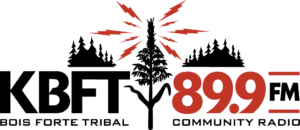By K.E. MacPhie
On the heels of 11,778 acres being returned from the Chippewa National Forest to the Leech Lake Band of Ojibwe in June 2024, we should be grateful. And we are. We have taken time to celebrate the accomplishment, recognize the many people who came together to make it possible, and envision the potential of what we can do with all that land. The transfer happened after decades of effort by Leech Lake to reverse an illegal land seizure by the U.S. Bureau of Indian Affairs in the 1940s.
But did anyone stop to ask why we didn’t have 11,778 acres of our own reservation land in the first place? Did anyone ask how much more we don’t own and who really owns the rez?
The Leech Lake Indian Reservation in the Northwoods of Minnesota has a total geographic area of 838,630 acres, 25% of which is water, so we’ll subtract that off the top. How much of the remaining 628,972 acres of land do you think the Leech Lake Band owns of the Leech Lake Reservation, including the newly acquired acres?
The answer is about 52,931 acres. That is 8% of the land within our own borders. And those acres aren’t all together in one easy to manage city. They are spread out and checkerboarded throughout the reservation amongst 23 separate remote communities across four county jurisdictions.
So, if the tribe only has jurisdiction on 8% of the land, who owns the rest?
Chippewa National Forest gave back 11,778 acres as admittedly wrongfully taken land, and another 4,362 is pending in federal legislation on technical errors that were discovered in the process of the recent return, but that is out of nearly 500,000 acres of the forest that lies in the boundaries of Leech Lake Reservation. That is 59% of the reservation land owned by the USDA Forest Service. Some of that has been outsourced to be managed as Bowstring State Forest, but for Washington, D.C., to own over half the land of a sovereign nation is a bit startling.
And before you think this is an unfortunate coincidence that a reservation was made on top of a protected forest, you should know it was the other way around. Leech Lake Reservation was federally established in 1887 by the Dawes Act. They intentionally chose remote, uninhabited parts of the state to push the Natives into while white settlers built up along major areas of commerce, like cities, rivers, and farmland.
However, the turn of the century and industrialization shifted settler interest to logging, and suddenly everyone wanted real estate and business in the Northwoods. Between allotments and various sketchy congressional acts, our reservation was pieced out and chopped up (literally) by various businesses until some well-meaning white women from Minneapolis lobbied for Teddy Roosevelt’s new concept of a National Forest to protect the pines from all being logged away. The federal government agreed to their idea in 1908….and then logged 95% of the pines for their own profit. And after there was nothing left to protect, the National ownership remained.
So 59% to the feds, 25% to the water, and 8% to the tribe. That leaves the other 8% of the land owned by state forests, county interests, and a handful of private, mostly non-Native companies, resorts, cabin owners, and residents who are pitted against the Native community in the landback debates, despite being the minority owners of the remaining land.
Other Bands battle land lose
And this dynamic is not unique to Leech Lake. White Earth Nation is only 45 minutes west and has a similar area at 829,440 acres, of which the tribe owns about 10%. In the 2024 state legislative session, White Earth Chairman Michael Fairbanks personally delivered a bill to the Capitol to ask the state to return 160,000 acres of the White Earth State Forest that is within reservation boundaries to the jurisdiction of the White Earth Nation. He said the tribe had the DNR power to care for the land, and he believed they would care for it better than the logging and selling off that had been done over the years the state had been managing it. In response, Becker County hired lobbyists and sent heavy opposition to committee hearings and town halls citing hypothetical worst case scenarios the tribe could enact should they get control of the land. Ultimately, the bill did not pass and so the state still controls that 20% of White Earth Nation.
The Mille Lacs Band has opted for a litigious route for Land Back. In Mille Lacs Band of Ojibwe v. County of Mille Lacs, the US District Court upheld that the Mille Lacs Band retain their treaty rights on 61,000 acres of their 1837 ceded lands, but within two months of winning that case, Mille Lacs County filed an appeal, which is still pending as of this writing.
Bois Forte Band took, yet another, approach when they worked with the Conservation Fund to outright purchase 28,000 acres in 2022. They didn’t require any legislation or regulatory permission, and it was the largest deal of its kind at the time. It restored 20% of the land within their reservation boundaries and has set a transformational tone that they are continuing with ongoing growth and development in the Vermillion area of the reservation.
Those are just four examples, out of hundreds around the nation, of tribes who are fighting for land back within their own reservation borders. They’re doing it in different ways, with different levels of success, and if we share this knowledge with each other and bring these ideas together, I believe we are looking at a future of true tribal nations and the ability to assert our political and geographic sovereignty in Minnesota and beyond.
We are in our healing era, and the Land Back movement is just one part of it. We are getting educated, getting sober, getting positions of influence, getting active, and getting better. If we keep pushing, keep asking the right questions and work together for solid answers, I truly believe the best years of the Native people are in front of us.
The post Land Back in Minnesota takes different paths first appeared on The Circle News.


